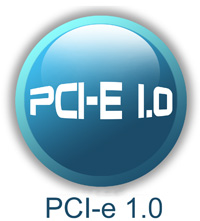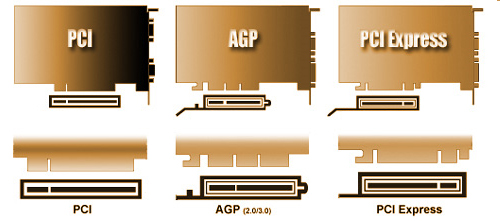PCI Express 1.0
HIS Technology, January 1, 2008
 PCI Express (Peripheral Component Interconnect Express), officially abbreviated as PCIe, is a computer expansion card standard designed to replace the older PCI, PCI-X, and AGP standards. Introduced by Intel in 2004, PCIe (or PCI-E, as it is commonly called) is the latest standard for expansion cards that is available on mainstream personal computers
PCI Express (Peripheral Component Interconnect Express), officially abbreviated as PCIe, is a computer expansion card standard designed to replace the older PCI, PCI-X, and AGP standards. Introduced by Intel in 2004, PCIe (or PCI-E, as it is commonly called) is the latest standard for expansion cards that is available on mainstream personal computers
PCI Express is used in consumer, server, and industrial applications, both as a motherboard-level interconnect (to link motherboard-mounted peripherals) and as an expansion card interface for add-in boards. A key difference between PCIe and earlier PC buses is a topology based on point-to-point serial links, rather than a shared parallel bus architecture.
The PCIe electrical interface is also used in a variety of other standards, most notably the ExpressCard laptop expansion card interface.PCI Express has replaced AGP as the default interface for graphics cards on new systems. With a few exceptions, all graphics cards being released today (2009) from ATI use PCI Express. ATI also has developed a multi-GPU system based on PCIe called CrossFire. Eventually AMD released motherboard chipsets which support up to four PCIe x16 slots, allowing tri-GPU and quad-GPU card configurations.
Uptake for other forms of PC expansion has been much slower and conventional PCI remains dominant. PCI Express is commonly used for disk array controllers, onboard gigabit ethernet and wi-fi but add-in cards are still generally conventional PCI, particularly at the lower end of the market. Sound cards, modems, serial port cards and other cards with low-speed interfaces are still nearly all conventional PCI. For this reason most motherboards supporting PCI Express offer conventional PCI slots as well.
